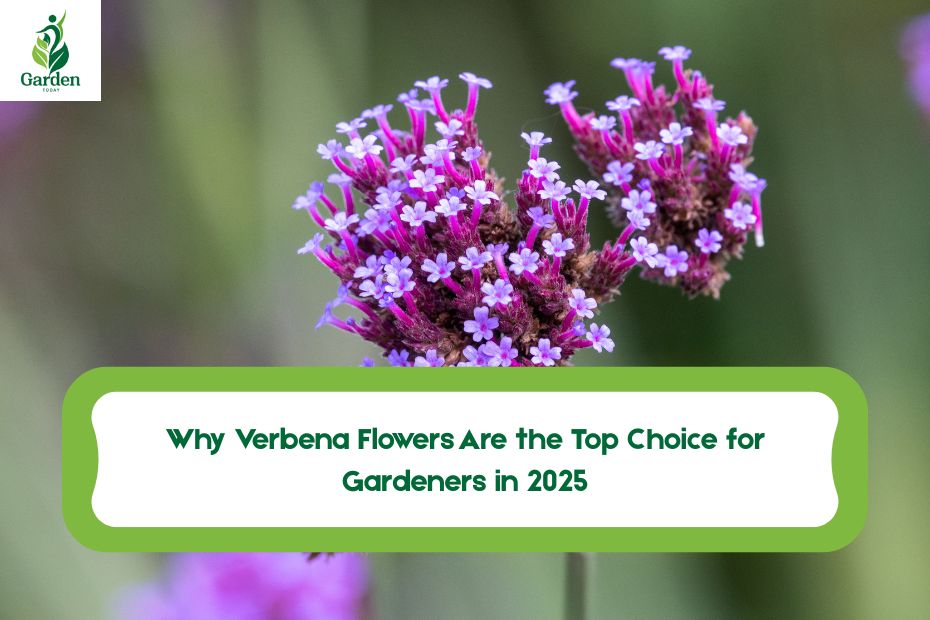Verbena flowers are colorful, easy-to-grow plants that brighten up gardens, balconies, and even indoor spaces. Known for their long blooming season and ability to attract butterflies and bees, these flowers come in many varieties, including purple, pink, red, white, and blue. Whether you’re a beginner or an experienced gardener, verbena plants are a fantastic choice for adding beauty to any space.
In this guide, we’ll cover everything you need to know about growing and caring for verbena flowers, including sunlight needs, watering tips, soil preferences, and how to use them in landscaping.
What is Verbena?
Verbena is a flowering plant that belongs to the Verbenaceae family. There are over 250 species of verbena, including annuals (plants that live for one season) and perennials (plants that come back every year). Some popular types include:
- Verbena bonariensis – Tall with purple flowers
- Homestead Purple Verbena – Deep purple blooms, great for ground cover
- Lemon Verbena – Known for its fragrant leaves, often used in teas
- Snowflurry Verbena – White flowers, perfect for borders
These plants are loved for their clustered flowers that bloom from spring to fall, making them a favorite among gardeners.
How to Grow Verbena Flowers
1. Choosing the Right Location
Verbena thrives in full sunlight (at least 6-8 hours per day). They can tolerate some shade but produce fewer flowers.
2. Soil Requirements
Verbena prefers well-draining soil. If the soil is too heavy, mix in sand or compost to improve drainage.
3. Planting Verbena
- Seeds: Start indoors 6-8 weeks before the last frost or sow directly in the ground after frost has passed.
- Transplants: Dig a hole slightly larger than the root ball, place the plant, and water well.
4. Watering Needs
- Water once or twice a week, allowing the soil to dry between waterings.
- Avoid overwatering, as it can cause root rot.
5. Fertilizing Verbena
Use a balanced fertilizer (10-10-10) every 4-6 weeks during the growing season for best blooms.
Verbena Care Tips
1. Pruning and Deadheading
- Remove faded flowers to encourage new blooms.
- Trim back leggy stems to keep the plant bushy.
2. Pest and Disease Control
- Aphids and spider mites can be a problem—use insecticidal soap if needed.
- Powdery mildew may occur in humid conditions—ensure good air circulation.
3. Propagating Verbena
You can grow new plants from:
- Cuttings (snip a healthy stem and place it in water or soil)
- Seeds (collect dried seed heads and store for next season)
Uses of Verbena Flowers
1. Landscaping and Garden Design
- Ground cover (Homestead Purple Verbena spreads beautifully)
- Hanging baskets & containers (great for patios and balconies)
- Borders & edges (adds a pop of color to garden pathways)
2. Attracting Pollinators
- Butterflies, bees, and hummingbirds love verbena flowers.
- Perfect for pollinator-friendly gardens.
3. Decorative Uses
- Bouquets & floral arrangements (long-lasting cut flowers)
- Wedding flowers (popular for rustic and garden-themed weddings)
4. Lemon Verbena for Tea & Aromatherapy
- The leaves of lemon verbena are used in herbal teas and essential oils.
- Known for its calming fragrance.
Common Verbena Problems & Solutions
| Problem | Solution |
|---|---|
| Yellow leaves | Overwatering—reduce watering |
| No flowers | Needs more sunlight or fertilizer |
| Powdery mildew | Improve air circulation, use fungicide if needed |
| Leggy growth | Prune regularly to encourage bushiness |
Conclusion: Why Verbena is a Must-Have Flower
Verbena flowers are versatile, low-maintenance, and stunning, making them a top choice for gardens, containers, and floral arrangements. With their long blooming season and ability to attract pollinators, they bring life and color to any space. Whether you plant them in hanging baskets, borders, or as ground cover, verbena adds charm and vibrancy.
If you’re looking for a drought-tolerant, heat-resistant, and easy-to-grow flower, verbena is the perfect pick. Try different varieties like purple, pink, or white verbena to create a colorful, lively garden that blooms all season long!
Visit Garden Today
